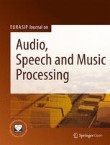Deep encoder/decoder dual-path neural network for speech separation in noisy reverberation environments
In recent years, the speaker-independent, single-channel speech separation problem has made significant progress with the development of deep neural networks (DNNs). However, separating the speech of each inte...
